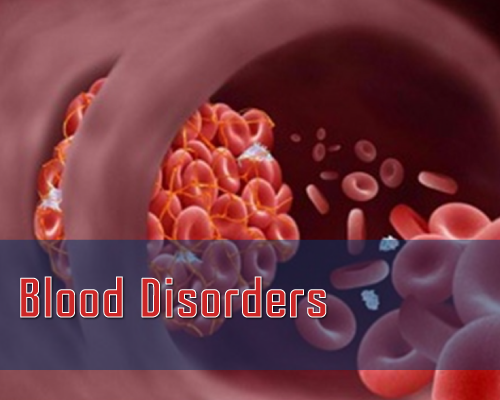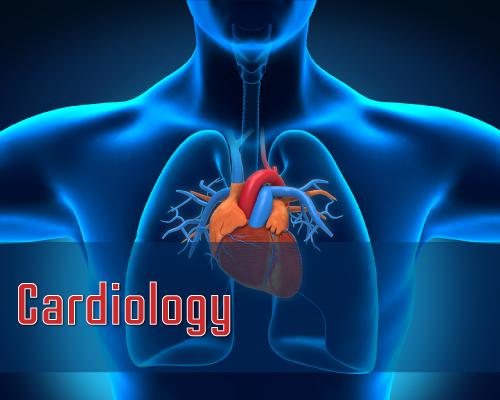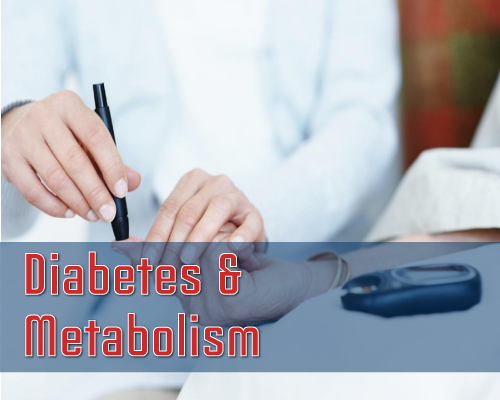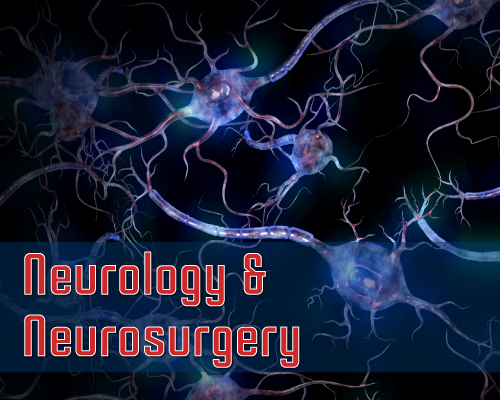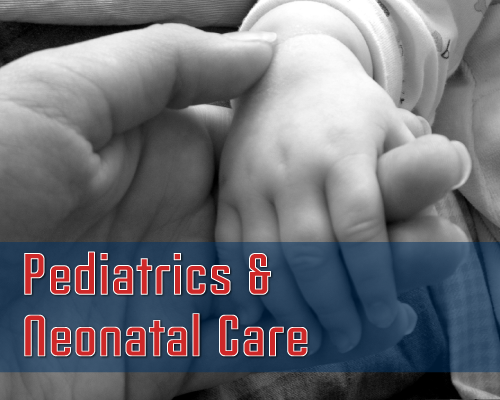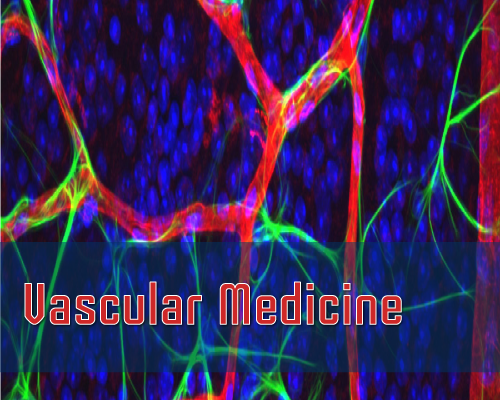Case Report
Analysis of the six-year operative treatment of proximal femoral fracture at the Dubrovnik County Hospital, Croatia
Marijo Bekic1*, Marko Golubovic1, Jakisa Lojpur1, Michele Mikolaucic1, Gor Astryan1 and Marin Marinovic2 and Sosso Maurice Aurelien1
1Orthopaedic and Traumatology Department, Dubrovnik County Hospital, Dubrovnik, Croatia
2Orthopaedic and Traumatology Department, University Hospital of Rijeka, Rijeka, Croatia
*Address for Correspondence: Dr. Marijo Bekic, Dubrovnik County Hospital, Orthopaedic and Traumatology Department, Croatia, Tel: +385 20431858; E-mail: [email protected]
Dates: Submitted: 22 August 2017; Approved: 28 August 2017; Published: 30 August 2017
Citation this article: Bekic M, Golubovic M, Lojpur J, Mikolaucic M, Astryan G, et al. Analysis of The Six-Year Operative Treatment of Proximal Femoral Fracture At The Dubrovnik County Hospital, Croatia. Int J Ortho Res Ther. 2017;1(1): 010-015.
Copyright: © 2017 Bekic M, et al. This is an open access article distributed under the Creative Commons Attribution License, which permits unrestricted use, distribution, and reproduction in any medium, provided the original work is properly cited.
Keywords: Dubrovnik-Neretva County; Proximal Femoral Fracture; Osteosynthesis; Osteoporosis.
Abstract
Within a period from January 2010 to January 2016, there were total of 920 surgically treated patients of Orthopaedy and Traumatology Department, Dubrovnik County Hospital, Croatia, which is a single acute hospital in Dubrovacko-neretvanska County where all patients with proximal femoral fracture are treated within the Orthopaedic-Traumatology Department. The aim of this retrospective study is to compare used implants according to type of the proximal femoral region fracture (femoral neck, pertrochanteric , subtrochanteric) and used osteosynthetic implant depending on the type of fracture. A new surgical techniques were used more commonly. Osteoporotic proximal femoral fractures stayed the major and growing problem in the geriatric traumatology and the traumatollogy in general as well.
Introduction
Today, osteoporosis and its consequences is a major health problem because of its association with low-energy trauma and its complications, which include chronic pain, disability, diminished quality of life, and premature death. Proximal femoral fracture is an established health problem in the West. Epidemiological studies have suggested that the incidence of fractures of proximal femur is increasing, since the general life expectancy of the population has increased significantly during past few decades. The incidence of proximal femoral fractures rises dramatically with increasing age. The incidence of the proximal femoral fracture is higher in women than in men. In countries in which incidence rates are high, the female to male ratio of age-adjusted incidence rates is generally around 2:1 or greater [1,2,3,4].
Proximal femoral fracture contributes to both morbidity and mortality in the elderly; approximtely 15 to 20% of patients die within one year of fracture. The analysis of data from different studies show a wide geographic variation across the world, with the higher proximal femoral fracture incidence reported from industrialized countries as compared to developing countries. The highest hip fracture rates are seen in North Europe and the US and lowest in Latin America and Africa.There is a north-south gradient seen in European studies. Also, more fractures are seen in the north of the US than in the south [5]. Scandinavia has the highest reported incidence of hip fracture worldwide. This variation in the distribution of hip fracture over different regions of the world demonstrate that genetic and environmental factors play a role in the etiology of proximal femoral fracture. The reasons for the variation in incidence rates according to geography and ethnicity include difference in levels of physical activity, diet, neuromuscular functioning, medication use, frequency of falls and orientation of falls [5].
Trends over time in diet, cigarette smoking and alcohol use have been proposed to explain the observed secular trends [1,2,3].
With rising life expectancy through the globe, the number of elderly individuals is increasing in every geographical region, and it is estimated that the incidence of hip fracture will rise from 1.66 million in 1990 to 6.26 million by 2050 [6].
The high rate of proximal femoral fracture in older people has two main causes: increased skeletal fragility and increased risk of fall-releatde trauma[7].
About 90% of hip fractures are associated with a fall, with the vast majority of such falls being from a standing height or less [3].
Trochanteric fractures are more common in women than in men by a margin of 3 to 1. Subtrochanteric fractures, which account for 10% of proximal femoral fractures, have a bimodal distribution pattern, appearing commonly in patients 20 to 40 years of age and in those over 60 years of age. A trivial fall or sudden twist can cause a trochanteric fracture in elderly while in younger patients it usually results from high energy trauma.
Operative treatment which allows early rehabilitation and offers the patient the best chance for functional recovery, is the treatment of choice for virtually all femoral fractures.
In manegment of peritrochanteric fractures a few methods are disponsibile: Dynamic Hip Screw (DHS), proximal femoral nailing (short standard and long gamma nail).
Dynamic Hip Screw (DHS) has been the major impalnt for fixation of trochanteric fractures in the last few decades, but the intramedullary devices (Gamma nail, PFN) have taken over as the modality of these fracture.
For the treatment of the femoral neck region, prothetic implants are methods of choice. In the patients less than 55 year old the fracture stabilisation with minimal invasive osteosynthesis is method of choice (canulated screws). The aim of this tehnique is to save femoral head and acetabular part of the femur (if there is no arthrosis of the hip). At the patient older than 60 years which suffers a neck fracture an non-cement total endoprothesis is performed. At the patient older than 75 years, the total cement or non-cement hip prothesis is primary method of choice assuming there is a psychicaly and biologicaly stabile persons. The patients with 80 and more years old with no degenerative changes according to their biological status, if there is a possibility, an total cement or noncement endoprothesis is ordered.
The patient which are biologically nonadequate, an partial endoprothesis is method of choise (expected life 5-7 years).
The patient with femoral head fracture, were not in these analysis (Pipkin’s fracutre and patients affected in younger age ) and in the case of fracture with large fragment there is a plastic screw tehnique today, while for multifragmentar fracture, a head replacement is indicated with total endpotorhesis. There were no such patients in this study and our expirience in the therapy of Pipkin fractures are very limited.
Patients and Methods
The present study comprised of 920 patients with proximal femoral fractures admitted and operated in Department of Orthopaedy and Traumatology, at County Hospital Dubrovnik during the January 2010 and January 2016. All these patients were analysed to detailed hospital medical history documentation to ascertain age, sex, type of fracture, body side, mechanism of injury, related injuries, pre-injury ambulatory status and pre-existing local and systemic conditions that may affect the trauma. All 920 patients underwent some type of surgically procedure depending on hip fracture type.
In this research we excluded the patients that were not operated at our department such as cases that were transported to place of residence or which were in such bad general health condition that it was contraindicated for them to be operated.
There were 691 female (75.11 %) and 229 male patients (24.89 %) which suffered fractures of the proximal femur . Femoral neck fracture suffered total of 599 patients (65.1 %); 167 male (27.88 %) and 432 female (72.12 %). 285 (30.98 %) patients suffered pertrochanterice region fracture; 55 (19.30 %) male and 230 (80.70 %) female patients. The subtrochanteric fractures suffered 36 patients (3.91 %). Among these patients which suffered subtrochanterical fractures, there were 7 male patients (19.44 %) and 29 (80.56 %) female patients.
In total, 794 patients (86.30 %) which suffered femoral proximal femoral fractures were older than 65 years; 625 female (67.93 %) and 169 male (18.7 %) patients.
Total of 245 patients (85.97 %) which were treated because of the pertrochanteric (S 72.1) femoral fractures were older than 65 years; 207 (72.63 %) were female, and 38 (13.33 %) were male patients.
In the grouop of 36 treated patients who suffered subtrochanteric region fracture (S72.2) there were 32( 88.89 %) patient older than 65 years; 27 (75 %) female and 5 (13.89 %) male patients.
504 patients suffered right side proximal femoral fracture (54.78 %) and 416 left side proximal femoral fractures (45.22 %).
Different methods of treatment are individally chosen; depending on the fracture type, the patients age, the surgeons preferences, institutes equipment and ability.
Of all patients, 337 (36.63 %) with femoral neck fracture underwent partial endoprothesis implantation (PEP) procedure. The oldest patient which was treated with PEP was 102 years old and the youngest 61 years old. 61 patient ( 6.63 %) had indication for Total Endoprothesis Implantation Procedure (TEP).
Standard short gamma nail was used in 235 (25.54 %) cases and long gamma nail was used in 59 (6.41 %) cases. The age of the patients treated with short gamma nail varied between 20 to 89 years old and with long gamma nail 21 to 93 years old.
199 (21.63 %) patients were treated with DHS plate procedure. The youngest patient treated with DHS method was 29 years old and the oldest 103 years old .
Canulated screw was ordered for 29 patients (3.15 %). The youngest patient treated with this method was 28 and the oldest 80 years old.
Among seven patients younger than 19 years who suffered proximal femoral fractures, four are male and 3 female patients. All were injured in car accidents.
In the period from 2010 to 2015 a total number of surgically treated patients with hip fractures raised from 139 in 2010 to 178 in 2015 [Table1].
| Table 1: Proportion of surgically treated hip fractures by age, sex, number,percentage and year summary. a International statistical clasification of diseases and related health problems, 10th revision (ICD-10) bFracture of neck of femur (Fractura colli femoris – S72.0) cPertrochanteric fracture (Fractura pertrochanterica – S72.1) dSubtrochanteric fracture (Fractura subtrochanterica – S72.2) |
||||||||||||
| ICD-10a | Age 0-19 |
Total % |
Age 20-64 |
Total % |
Age 65> |
Total % |
Total | Total | ||||
| M % |
F % |
M % |
F % |
M % |
F % |
M % |
F % |
|||||
| S72.0b | 2 0. 33 | 2 0.33 | 4 0.67 | 39 6.51 | 39 6.51 | 78 13.02 | 126 21.04 | 391 62.28 | 51786.31 | 16727.88 | 43272.12 | 599 |
| S72.1c | 1 0.35 | 1 0.35 | 2 0.70 | 16 5.61 | 22 7.72 | 38 13.33 | 38 13.33 | 207 72.63 | 24585.97 | 5519.30 | 23080.70 | 285 |
| S72.2d | 1 2.28 | 1 2.28 | 1 2.28 | 2 5.56 | 3 8.33 | 5 13.89 | 27 75.00 | 3288.89 | 7 19.44 | 2980.56 | 36 | |
| Total | 4 0.43 | 3 0.33 | 7 0.76 | 566.0 9 | 636.85 | 11912.94 | 169 18.37 | 625 67.93 | 79486.30 | 229 24.89 | 69175.11 | 920 |
Analysing the medical documentation, we discovered these complications in the group of 920 patients which can affect the proximal trauma. [Table 2] shows estimated correlations between various risk factors and risk of hip fracture.
|
Table 1-2: Proportion of surgically treated hip fractures by age, sex, number,percentage and year summary. |
|||||||||||||||||||||
| PRELOM BEDRENE KOSTIS72.0-S72.2 | |||||||||||||||||||||
| ICD-10 | 2010. | 2011. | 2012. | 2013. | 2014. | 2015. | Total | ||||||||||||||
| M | F | Tot | M | F | Tot | M | F | Tot | M | F | Tot | M | F | Tot | M | F | Tot | M | F | Tot | |
S72.0 |
31 | 88 | 119 | 32 | 84 | 116 | 26 | 61 | 87 | 28 | 70 | 98 | 23 | 61 | 84 | 27 | 68 | 95 | 167 | 432 | 599 |
S72.1 |
4 | 11 | 15 | 6 | 21 | 27 | 8 | 45 | 53 | 9 | 42 | 51 | 12 | 54 | 66 | 16 | 57 | 73 | 55 | 230 | 285 |
S72.2 |
|
5 | 5 |
|
2 | 2 | 1 | 4 | 5 | 3 | 5 | 8 |
|
6 | 6 | 3 | 7 | 10 | 7 | 29 | 36 |
Total |
35 | 104 | 139 | 38 | 107 | 145 | 35 | 110 | 145 | 40 | 117 | 157 | 35 | 121 | 156 | 46 | 132 | 178 | 229 | 691 | 920 |
Br.operac. |
|||||||||||||||||||||
| 58150 | 17 | 34 | 51 | 15 | 35 | 50 | 21 | 24 | 45 | 13 | 30 | 43 | 12 | 48 | 60 | 20 | 37 | 57 | 98 | 208 | 306 |
| 58151 |
|
|
|
2 | 2 | 4 | 1 | 1 | 2 | 1 |
|
1 | 1 | 3 | 4 | 1 | 1 | 2 | 6 | 7 | 13 |
| 58152 | 7 | 30 | 37 | 13 | 27 | 40 | 15 | 26 | 41 | 14 | 41 | 55 | 11 | 32 | 43 | 10 | 46 | 56 | 70 | 202 | 272 |
Ukupno |
24 | 64 | 88 | 30 | 64 | 94 | 37 | 51 | 88 | 28 | 71 | 99 | 24 | 83 | 107 | 31 | 84 | 115 | 174 | 417 | 591 |
Discussion
Proximal femoral fractures account for less than 20% of all osteoporotic fractures but they account for the majority of fracture-releated health care expenditure and mortality in men and women over the age of 50 [8,9,10].
The incidence of the proximal femoral fracture varies among different countries and populations. Rates are higher in Scandinavia than in Western Europe and Oceania. A north-south gradient in age-standardized risk is found in Europe and US, with higher rates in the north.
There is age adjusted increase in incidence that has been observed in several countries over the last 50 years. The incidence increases with poor economic status, reduced winter sunlight, and water fluoridation. Fractures occur more commonly in the winter season due to altered neuromuscular coordination and vitamin D definciency [4-11].
The country-specific risk of hip fracture and the 1-year probability of a major osteoporotic fracture were determined on a worldwide basis from a systematic review of literature by JA Kanis [9]. There was a greater than 10-fold variation in hip fracture risk and fracture probability between countries. A total of 45 country and/or ethnic models were available for inclusion into the distribution of fracture probability. Hip fracture low risk country was Croatia [9,10,11].
A study on secular trends from Uppsala, Sweden, (1965-1980) showed an annual increase of 2.2% for age and sex adjusted hip fracture rates, which increased from 430/100 000 in 1965 to 650/100 000 in 1980. The age specific incidence increased especially in the group aged ≥85 years, in whom fractures of the femoral neck were three times more common and trochanteric fractures four time common in 1980 than in 1965 [12].
There are many databases that cover age and sex adjusted incidence of hip fracture in North and Central European countries. A lesser number of studies are avaliable from southern Europe. An Italian study looked at the incidence of hip fracture in the county of Sienna from 1980-1991 shows that trend have risen linearly in men from 57.5/100 000 person a year to a 7.4% annual increase. In females, no significant trend was observed. The overall incidence rate during this period was 157/100 000, much lower than that in northern or central European countries [13].The study from Spain looked at hip fracture trends in northern Spain between 1988 and 2002 and showed increased hip fracture incidence; there were no significant changes following adjustement of age[14]. Proximal femoral fractures are more common in women than in men by a margin of 3 to 1. Our research is comprising a 5 year perod 2010-2015 with exactly 920 patients that were hospitalised regarding the proximal femoral fracture. In our study 74,60 % patients which suffered proximal femoral fracture were female; there was even higher ratio 4:1.
There are several factors that influence affect of the hip fracture: Fall-releated trauma from a standing height or less [3]; genetics and family history – women who reported that their mothers had had a hip fracture are twice as prone to the risk of hip fracture as of women without this family history [15]. Most evidence suggests that estrogen acts primarily to reduce bone resorption. The patients mainly sustained injury due to the fall at home. In our research, only 31 patient (25 male and 6 female) suffered hip fracture caused by road traffic accident, and 15 had pathological fractures. Randomized trials have clearly established that replacement estrogen therapy prevents or greatly decreases loss of bone mass in both oophorectomized women and in women with intact ovaries. Many observational epidemiologic studies indicate that estrogen replacement therapy also protect against hip fracture, and that the longer estrogen is used, the greater the protection is [16-18].
Buchner and Larson found that the risk of fractures generally, among the people with Alzheimer’s disease was three times higher than expected [19]. In our study, the patients who had established history of Alzheimer’s disease numbered 20 (or 2.17%).
Other studies have demonstrated that impairments of gait, muscle weakness, lower limb disfunction and use of walking aides have been associated with increased risk of falls independent of bone mass, confirming the importance of fall-releated factors in the etiology of fractures in older people [15,20,21].
Poor visual acuity in one or both eyes increased risk of proximal femoral fractures. Cataracta and diabetic rethinopathy were also associated with risk of hip fracture. In EPIDOS cohort study (Dargent-Molina) women with the worst visual acuity had twice of the hip fracture rate of women with the non-impaired vision [20]. It is important to notice that most people in older age that suffered hip fractures have had impaired visual function. In our study history of previous vision impairment (amaurosis) was noticed at 1.96 % of patients; neuromuscular impairment in 12.57 % patients; history of stroke in 5.71 %; history of neoplastic disease in 3.58 % of patients. 18 patients (1.96 %) suffered injury of proximal femur after alcohol abuse. Even 11.74 % of patients had medical documented psychoorganic syndrome before the fall [Table 4].
| Table 3: Established risk factors for proximal fermoral fracture. | ||
| Risk factors | N | % |
| Age>65 | 575 | 86,60 |
| Neuromuscular impairment | 115 | 12.57 |
| Stroke history | 53 | 5.71 |
| Vision impairment (amaurosis) | 18 | 1.96 |
| History of the previous lower extremity fracture | 30 | 3.26 |
| History of previous opposite side hip fracture | 71 | 7.71 |
| Neoplastic disease | 33 | 3.58 |
| Acute alcohol intake | 18 | 1.96 |
| Psychoorganic sy. | 108 | 11.74 |
| Parkinson΄s disease | 20 | 2.17 |
| Alzheimer΄s disease | 11 | 1.2 |
People who have had one hip fracture have a 60 percent higher risk of a subsequent hip fracture than people with no history of hip fracture . The associations between fracture history and later hip fracture appear to be stronger in men than in women [22,23]. In our research, 71 (7.71%) patient with proximal femoral fracture had previous history of opposite side proximal femoral fracture and 30 (3.26 %) suffered previous other lower limb extremity fracture [Table 4].
Parkinson’s disease and stroke have been associated with inceased risk of hip fracture in several studies [24,25]. These conditions are associated with inceased risk of falling and probable reduced bone strength due to poor mobility. People with Parkinson’s disease appear to be particulary high risk of proximal femoral fracture with reported relative risks of 10 or more [25,26]. In our study there were only 20 (2.17 %) patients with documented history of Parkinson´s disease.
Epilepsy, hyperthyroidsm, pernicious anemia and diabetes might be associated with risk of hip fracture [15,22, 27-29]. Acute alcohol intake causes movement discoordination, resulting in fall and hipp fracture. In our research, there were 18 patients (1.96 %) that suffered proximal femoral injury under acute alcohol intake.
Fractures involving the peritrochanteric region of the femur occur most frequently and are perhaps the most commonly stabilized fractures in orthopaedic surgery.
Various modalities of treatment exist. Operative management consisting of fracture reduction and stabilisation and early patient mobilisation minimizes many of complications related to low activity and bed rest thus consequently becoming the treatment of choice for peritrochanteric fractures. Numerous impalnts are available both intramedullary and extramedullary and good results have been reported with all of them [30-33]. Closed intramedullary nailing has become accepted as the treatment of choice for management of most femoral fractures.
The reason behind proximal femoral fractures is increase in population that is older than 60 years. It becomes evident by observing the growth in number of surgically treated patients during the six year period .The reason of the growing number is the increase of life duration and on the other hand, the increase of older in a total population percentage. Surely, the Croatian population is getting older resulting with higher incidency of proximal femoral fractures. This is clearly visible from our study; in short time period of six years, there is a constant incerase in number of proximal femoral fractures [Table 5]. Majority of these patients sustained low-energy trauma during fall from sitting or standing position. Proximal femoral fractures stayed the major problem in the geriatric traumatology.
In our study, there was 4.42 % of patients that suffered subtrochanteric fracture; 74.47 % female and 25.53 % male patients. 87.23 % of the total number of patients that suffer subtrochanteric type of fracture were older than 65 years; 13.45 % were younger than 65 years.
References
- Melton LJ III, O'Fallon M, Riggs BL. Secular trends in the incidence of hip fractures. Calcif Tissue Int 1987; 41: 57-64. https://goo.gl/nmVncb
- Obrant KJ, Bengner U, Johnell O. Increasing age-adjusted risk of fragility fractures: a sign of increasing osteoporosis in successive generations? Calcif Tissue Int 1989; 44: 157-67. https://goo.gl/3y9n7q
- Nevitt MC, Cuminngs SR, Vellas B, Toupet M, Rubenstein L et al. Falls, balance and gait disorders in the elderly. Proceedings of the International Symposium “Falls in the Elderly“. Madrid, Spain, September 10, 1991. Falls and fractures in older women. Paris, France: Elsevier, 1992: 69-80. https://goo.gl/uEXAXT
- Koval KJ, Zederman ID. Intertrochanteric fractures. Bucholz RW, Heckman JD. Rockwood and Green's fractures in adults. 5th ed. Philadelphia: Lippincott Williams and Wilkins 2001;1635-63. https://goo.gl/iGMWcu
- Dinesh KD, Dennison EM, Harvey NC, Cooper C. Epidemiology of hip fracture: Worldwide geographic variation. Indian J Orthop 2011; 45: 15-22. https://goo.gl/oMjBaC
- Cooper C, Campion G, Melton LJ. 3rd Hip fracture in the elderly: A world-wide projection. Osteoporosis Int. 1992; 2: 285-9. https://goo.gl/AP4Bq5
- Cumming RG, Nevitt MC, Cummings SR. Epidemiology of hip fractures. Epidemiol Rev.1997; 19: 244-57. https://goo.gl/SyPz8p
- Kanis JA, Oden A, McCloskey EV, Johansson H, Wahl DA, Cooper C. A systematic review of hip fracture incidence and probability of fracture worldwide. Osteoporosis Int 2012. 23: 2239-56. https://goo.gl/Fx6WJn
- Karacic TP, Kopjar B. Hip fracture incidence in Croatia in patients aged 65 years and more. Lijec Vjesn. 2009; 131: 9-13. https://goo.gl/LtXaCk
- Strom O, Borgstrom F, Kanis JA, Compston J, Cooper C, McCloskey EV, et al. Osteoporosis: burden, health care provision and opportunities in the EU. A report prepared in collaboration with the International Osteoporosis Foundation (IOF) and the European Federation of Pharmaceutical Industry Associations (EFPIA). Arch Osteoporosis 2011; 6: 59-155. https://goo.gl/tV7GSs
- Johnell O, Kanis JA. An estimate of the world-wide prevalence and disability associated with osteoporotic fractures. Osteoporosis Int 2006; 17: 1726-33. https://goo.gl/KBcWWU
- Zain Elabdien BS, Olerud S, Karlstrom G, Smedby B. Rising incidence of hip fracture in Uppsala, 1965-1980. Acta Orthop Scand. 1984; 55: 284-9. https://goo.gl/KPcw18
- Agnusdei D, Camporeale A, Gerardi D, Rossi S, Bocchi L, Gennari C. Trends in the incidence of hip fracture in Sienna, Italy, from 1980 to 1991. Bone. 1993; 14: 31-4. https://goo.gl/8N6QJZ
- Hernandez JL, Olmos JM, Alonso MA, Gonzales-Fernandez CR, Martinez J, Pajaro M, et al. Trend in hip fracture epidemiology over a 14-year period in a Spanish population. Osteoporosis Int. 2006;17: 464-70. https://goo.gl/PyAATf
- Cummings SR, Nevitt MC, Browner WS et al. Risk factors for hip fracture in white women. Study of Osteoporosic Fracture Research Group. N Engl J Med 1995; 332: 767-73. https://goo.gl/trxR42
- Lindsay R, Hart DM, MacLean A. Bone response to termination of oestrogen treatment. Lancet 1978; 1: 1325-7. https://goo.gl/ZAL4Dk
- Christiansen C, Christensen MS, Transbol I. Bone mass in postmenopausal women after withdrawal of oestrogen/gestagen replacement therapy. Lancet 1981; 1: 459-61. https://goo.gl/hcEKn5
- Grady D, Rubin SM, Petitti DB, Fox CS, Black D, Ettinger B, et al. Hormonet therapy to prevent disease and prolong life in postmenopausal women. Ann Intern Med 1992; 117: 1016-37. https://goo.gl/ithBxB
- Buchner DM, Larson EB. Falls and fractures in patients with Alzheimer-type dementia. JAMA 1987; 257: 1492-5. https://goo.gl/jsx9U4
- Dargent-Molina P, Favier F, Grandjean H. Fall-releated factors and risk of hip fracture: the EPIDOS prospective study. Lancet 1996; 348: 145-9. https://goo.gl/A1oah7
- Nguyen TV, Eisman JA, Kelly PJ. Risk factors for osteoporotic fractures in elderly men. Am J Epidemiol 1996; 144: 255-63. https://goo.gl/GScDbh
- Johnell O, Nilsson BE. Hip fracture and accident disposition. Acta Orthop Scand 1985; 56: 302-4. https://goo.gl/Kiu1NE
- Melton LJ III, Ilstrup DM, Beckenbaugh RD. Hip fracture reccurence: A population-based study. Clin Orthop 1982; 167: 131-8. https://goo.gl/SFg3uS
- Grisso JA, Kelsey JL, Strom BL. Risk factors for hip fracture in black women. The Northeast Hip Fracture Study Group. N Engl J Med 1994; 330: 1555-9. https://goo.gl/wBwATi
- Grisso JA, Kelsey JL, Strom BL, Chiu GY, Maislin G, O'Brien LA, et al. Risk factors for fall as a cause of hip fracture in women. The Northeast Hip Fracture Study Group. N Engl J Med 1991; 324: 1326-31. https://goo.gl/DP7oSX
- Johnell O, Melton LJ III, Atkinson EJ. Fracture risk in patient with Parkinsonism: a population-based study in Olmsted County, Minnesota. Age Agening 1992; 21: 32-8. https://goo.gl/8WFA5Y
- Annengers JF, Melton LJ III, Sun CA. Risk factors for age –releated fractures in patients with unprovoked seizures. Epilepsia 1989; 30: 348-55. https://goo.gl/vQi43b
- Nilsson BE, Westlin NE. Hip fracture incidence after gastrectomy. Acta Chir Scand 1971; 137: 533-4.
- Goerss JB, KIM CH, Atkinson EJ. Risk of fractures in patient with pernicious anemia. J Bone Miner Res 1992; 7: 573-9. https://goo.gl/1dkJFU
- Guyton JL Fractures of hip, acetabulum and pelvis. Canale ST. Campbell's Operative Orthopaedics. 9th ed. Mosby, St Louis; 1998: 2181-99.
- Haidukowych G, Israel A, Berry D. Reverse obliquity fractures in the intertrochanteric region of the femur .J Bone Joint Surg Am 2001; 83: 643-50. https://goo.gl/wnozr6
- Davic TRC, Sher Horsman A, Simpsen M, Porter BB, Clecketts rG. Intertrochanteric femoral fractures: mechanical failure after internal fixation. J Bone Joint Surg 1990; 72: 26-31. https://goo.gl/zdNTs6
- Al-yassari G, Langstaff RJ, Jones JWM, Al-Lami M. The AO/ASIF proximal femoral nail (PFN): a new device for treatment of unstabletrochanteric femoral fracture. Injury 2002; 33: 395-99. https://goo.gl/imQtsk
Authors submit all Proposals and manuscripts via Electronic Form!




